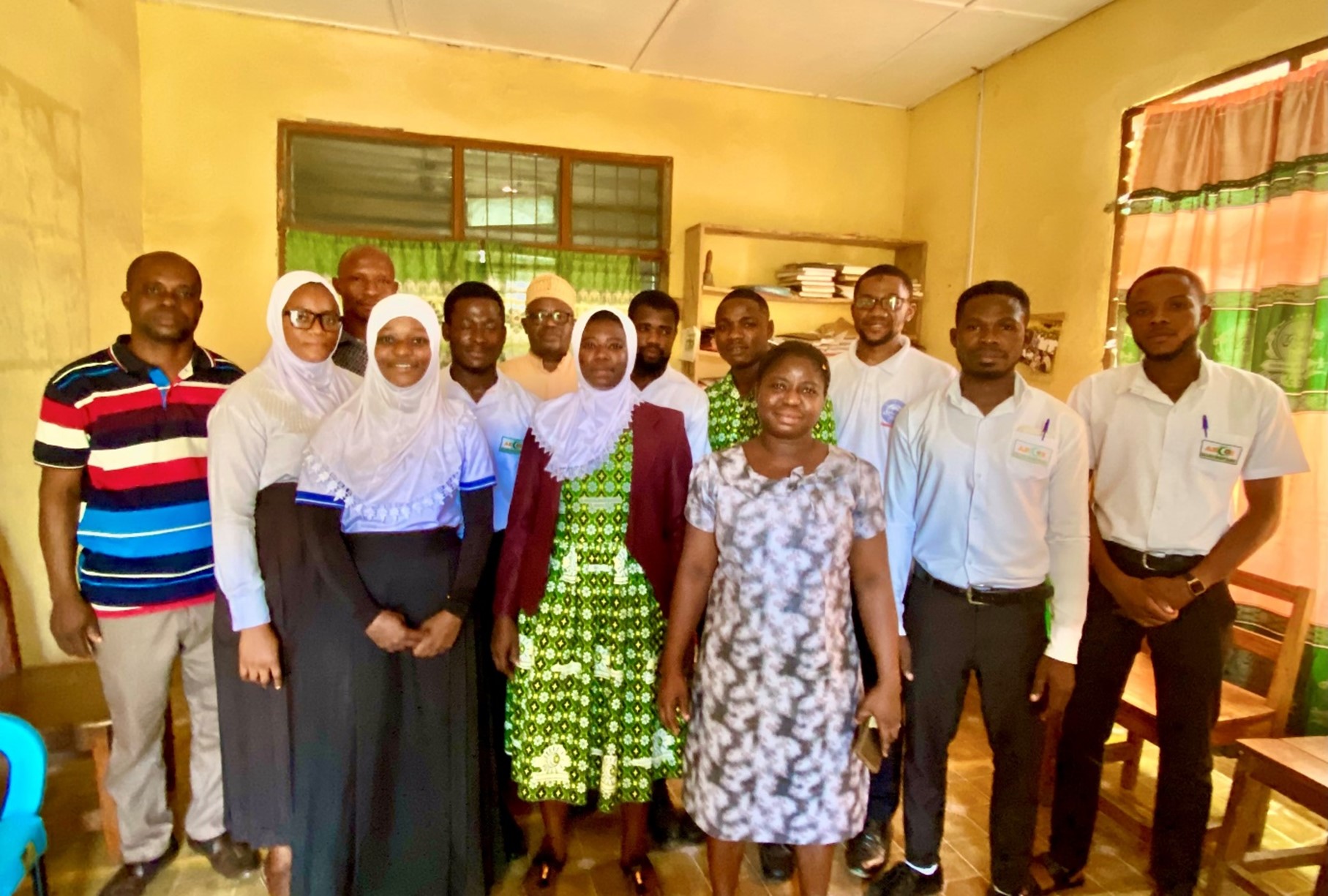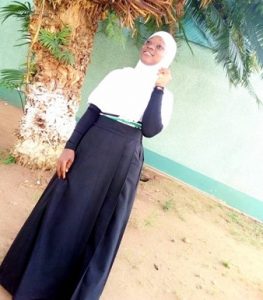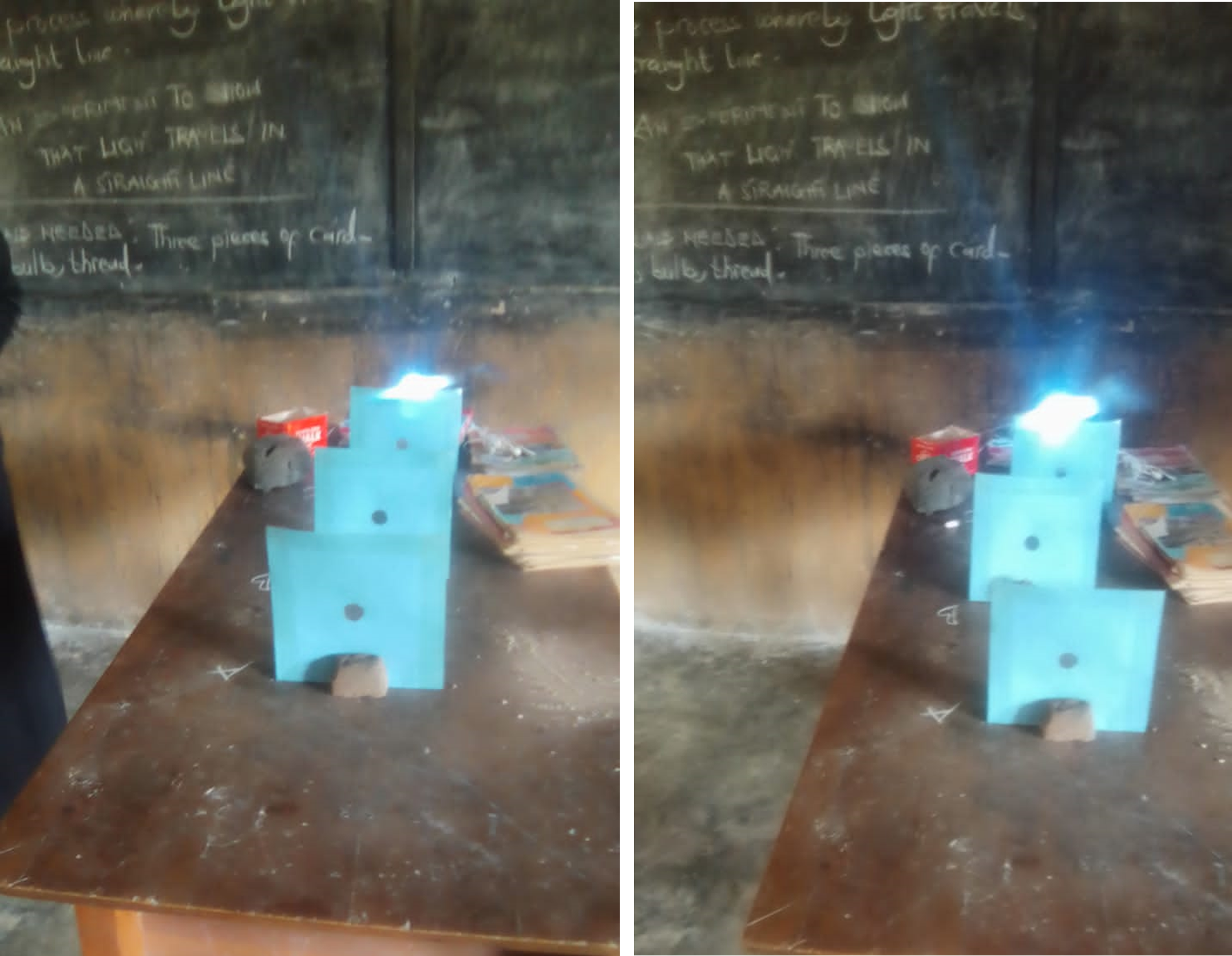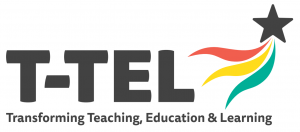
Mariam (first from left on the front row) and other student teachers (mentees) with their mentors at Abrefa JHS, Wenchi
My name is Mariam Yakub, a Level 400 Bachelor of Education (B.Ed.) student teacher at Al-Faruq College of Education, training to become a Science and Mathematics teacher.
Though I did not set out to become a teacher, I have now developed a passion for the profession. I want to have an impact in young people’s lives by influencing them positively. I want them to build upon their self-esteem and believe that no matter their background, if they work hard, they will become successful in life.
I have often been asked why a female like me finds interest in teaching Science and Mathematics. I shrug and say they are like any other subjects. I have always loved Science and Mathematics. My goal is to change the perception that boys are better than girls at Maths. I have a strong conviction that women and girls can equally do well in all endeavours if they put their minds and efforts to them.
 Though I am a Moslem and attended an Islamic secondary school, I got a better appreciation of Islam and its teachings at Al-Faruq College of Education. At the College I got the opportunity to continuously practice teaching in basic school classrooms during Supported Teaching in Schools (STS), developed my self-confidence and learnt more about my religion. I have also been equipped and exposed to various methodologies in teaching such as using group work, assessment, innovation, brainstorming and pair work (think-pair-share). The approaches we use are learner-centred where the focus is on the learner learning at their own pace and building on their existing knowledge rather than that of our predecessors where the teacher is at the heart of teaching and learning. Being a student teacher has really helped me build my confidence. I was a very timid person, however going through the College, I have been able to overcome this challenge. I can now lead a whole lesson by myself and seeing students participating actively during my lessons gives me so much joy.
Though I am a Moslem and attended an Islamic secondary school, I got a better appreciation of Islam and its teachings at Al-Faruq College of Education. At the College I got the opportunity to continuously practice teaching in basic school classrooms during Supported Teaching in Schools (STS), developed my self-confidence and learnt more about my religion. I have also been equipped and exposed to various methodologies in teaching such as using group work, assessment, innovation, brainstorming and pair work (think-pair-share). The approaches we use are learner-centred where the focus is on the learner learning at their own pace and building on their existing knowledge rather than that of our predecessors where the teacher is at the heart of teaching and learning. Being a student teacher has really helped me build my confidence. I was a very timid person, however going through the College, I have been able to overcome this challenge. I can now lead a whole lesson by myself and seeing students participating actively during my lessons gives me so much joy.
What I like about the B.Ed., is the Supported Teaching in School (STS) component. Right from Level 100, we started observing lessons in basic schools and interacted with the teachers who had been assigned to us as mentors. We also asked questions on the old and new curriculum. This helped us to better appreciate the curriculum and the various teacher education reforms. At first, the basic schoolteachers found it annoying that we were asking so many questions, but they later came to appreciate why we sought the information. I believe this approach has made us more efficient in the teaching field. Previously, student teachers only went on STS in their final year (level 300) but it’s no longer the same. We now have the opportunity for real classroom experience through STS right from Level 100. This has afforded us the opportunity to observe and know more about classroom behaviour and practices to contextualize our lesson preparation and delivery.
In Level 400, I was posted to Abrefa JHS School, Wenchi. The first activity we did was on cooperative teaching (joint teaching with mentors where we share teaching between colleagues) at the initial stages. Our mentors were kind and to ensure we settled in quickly, varied orientations sessions were organized which made us feel welcomed. These sessions offered us good information about the partner school, key stakeholders and how to maintain good relations.
Integrating technology and innovation have been key in my lessons. Innovation is all about using technology and varied strategies to empower learners to improve their understanding and skills. Technology is a powerful tool that can transform learning. I also ensure that I include practical materials and demonstrations wherever possible to make learning enjoyable in my lessons. For example, when I was teaching ‘rectilinear propagation of light’ (the scientific principle that light travels in a straight line), I integrated technology in the lesson. To demonstrate, I brought a few tools such as 3 pieces of squared cardboards with a hole in each of them which we labeled A, B & C, a light bulb, wire, and stones to use as stands to hold the cardboard firmly. To make the learners understand the lessons, I took them through the procedures.
First, I introduced the lesson and then asked the students to identify the items. I tried to encourage classroom participation by inviting the students in groups to arrange the pieces of cardboard in a straight line 2 metres apart. I then used a wire through the holes to ensure the line was straight. After observing the light through the straight line with the wire in place, we then changed the position of cardboard B from the line. I then asked them if they could see the light. The same procedure was repeated for all the students to observe the lesson. After the observation, I asked them what they saw; and they shared their views enthusiastically.

Using practical demonstrations in the lesson: rectilinear propagation of light
Another instance where I integrated practical teaching and learning materials (TLMs) in my lesson was when I was teaching about the ‘Eclipse’. I brought some cardboards, torch light and stones for stands, and a big white cardboard. The students and I then cut out circular models representing the moon, the sun, and the earth in varied sizes. I then traced a big white cardboard so that they will be able to view the shadow of it. I then placed the model representing the moon, the sun, and the earth. I called the students row by row so they could view it. I turned on the touch light so they could observe it. After that, I changed the position of the sun and then the moon. After that I asked the learners what an eclipse is, and they were able to articulate it. I felt happy because introducing the practical aspect made my work very easy and the learners were engaged and excited.
In my first week at Abrefa JHS School, I observed that male students were the ones always answering questions. The female students were not participating and contributing during class discussions even though they knew the answers. With the Gender Equality and Social Inclusion training we received in the College, I devised a strategy to get the female students to participate in lessons. I divided the class into two groups and pitched the female students against the male students. The group that contributed most received extra credit. Since then, the girls started answering questions and actively participated in the classroom just like the boys. This started a healthy competition in the class, and it has remained the same.
I look forward to becoming one of Ghana’s Most Outstanding Teachers and the training I am receiving at Al-Faruq College of Education is setting me on the path towards greatness. Watch out for Mariam Yakub.
